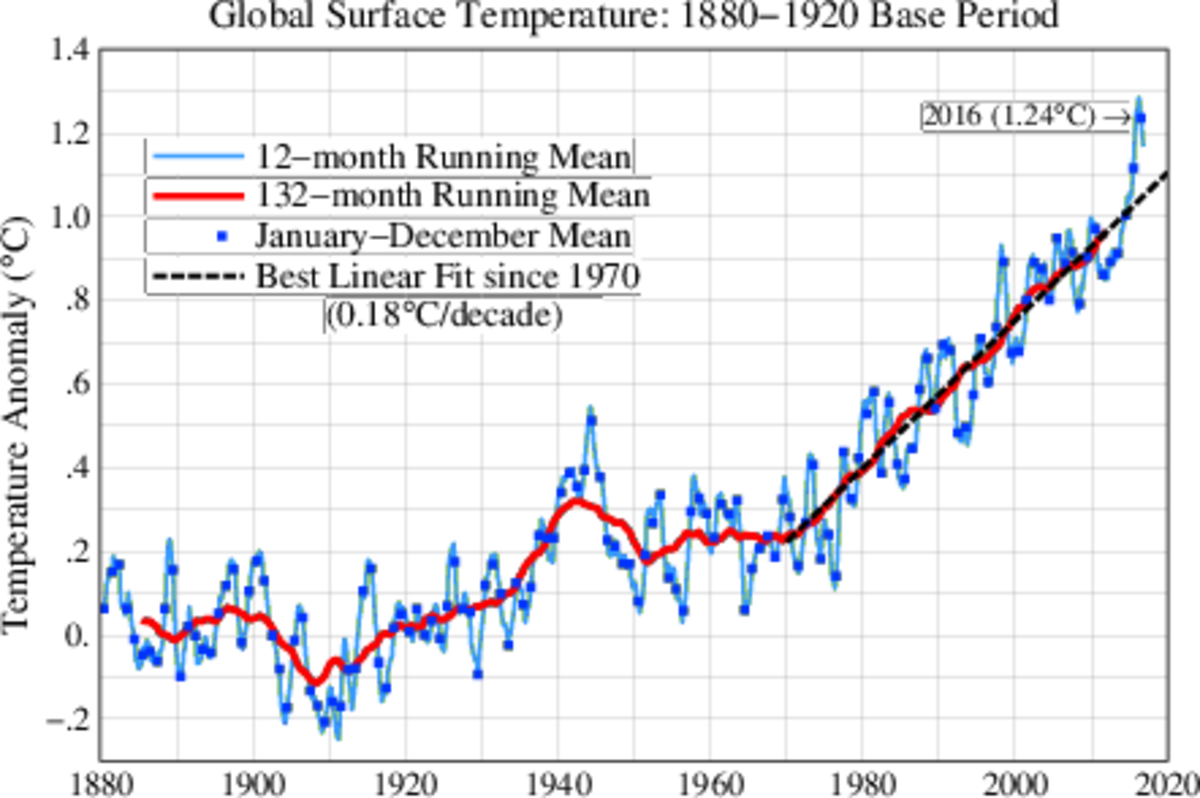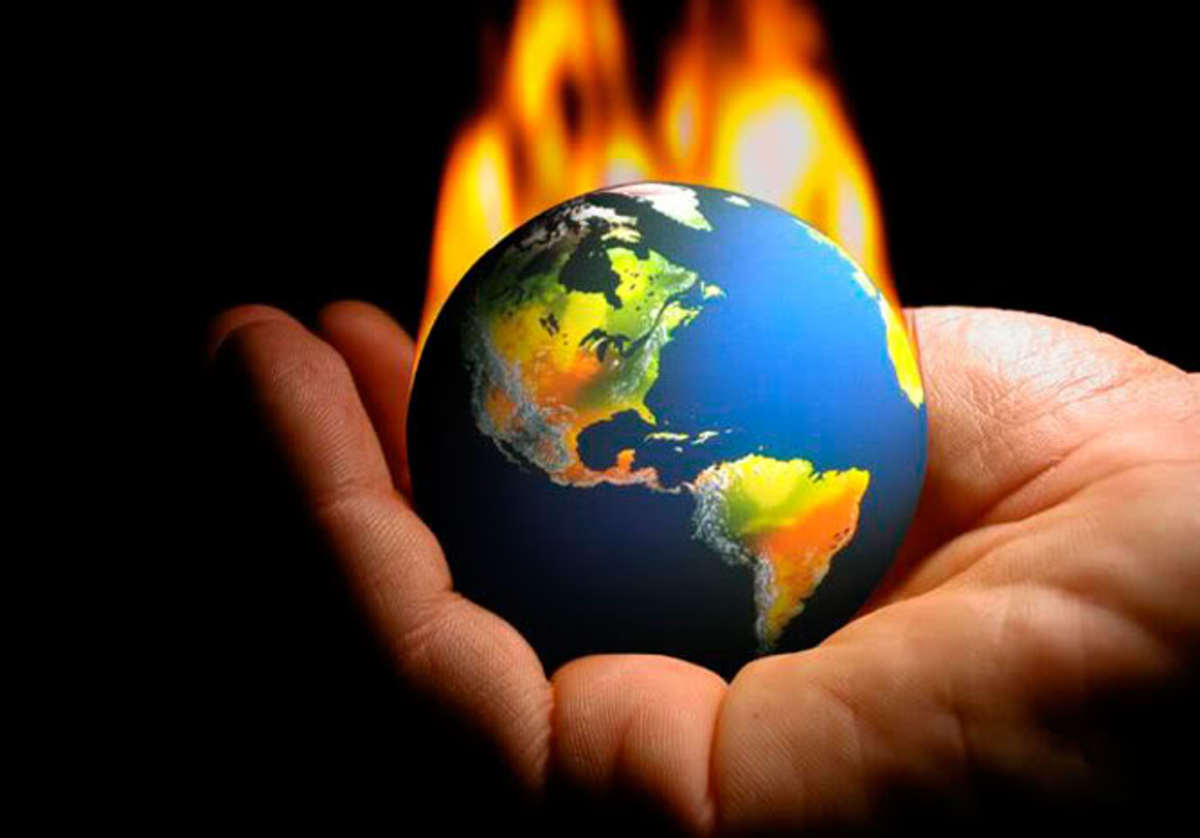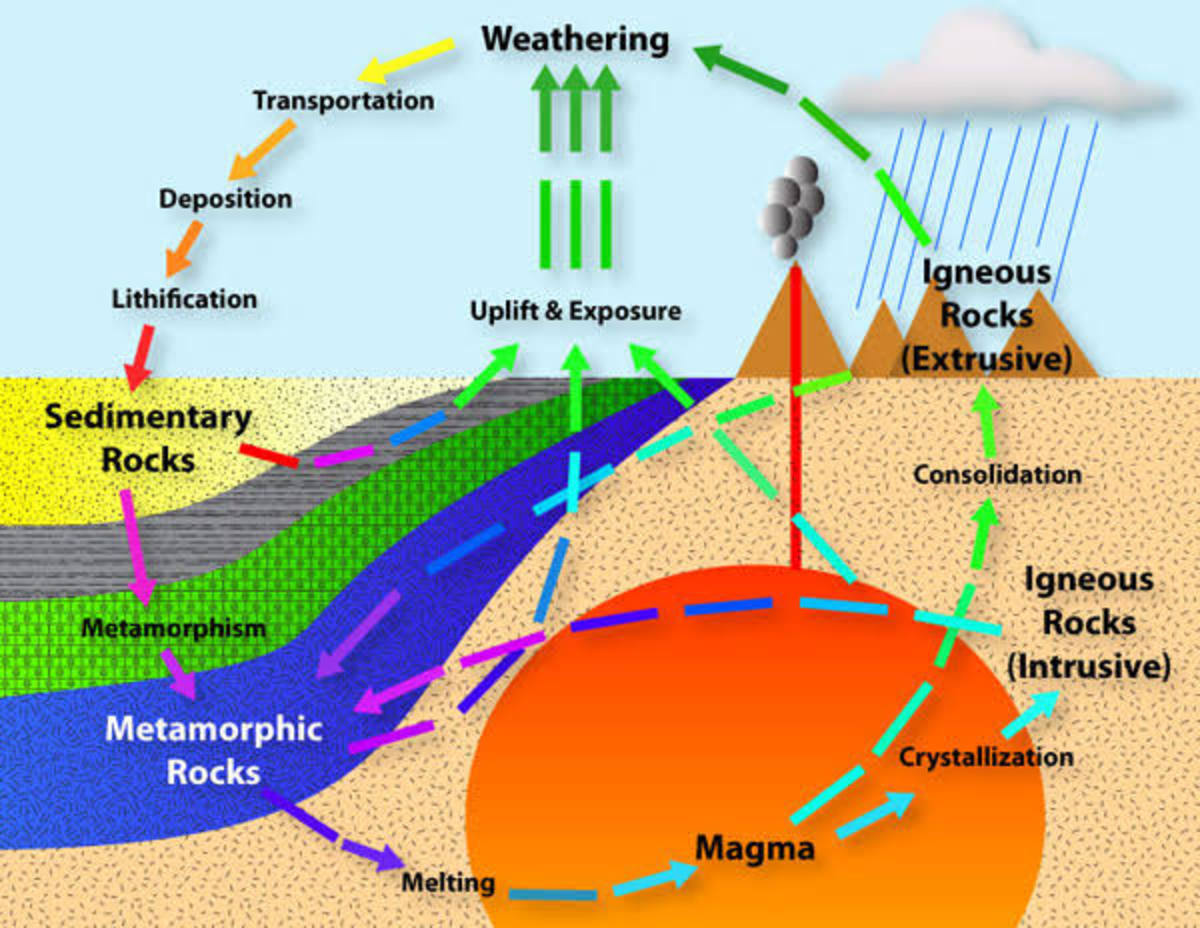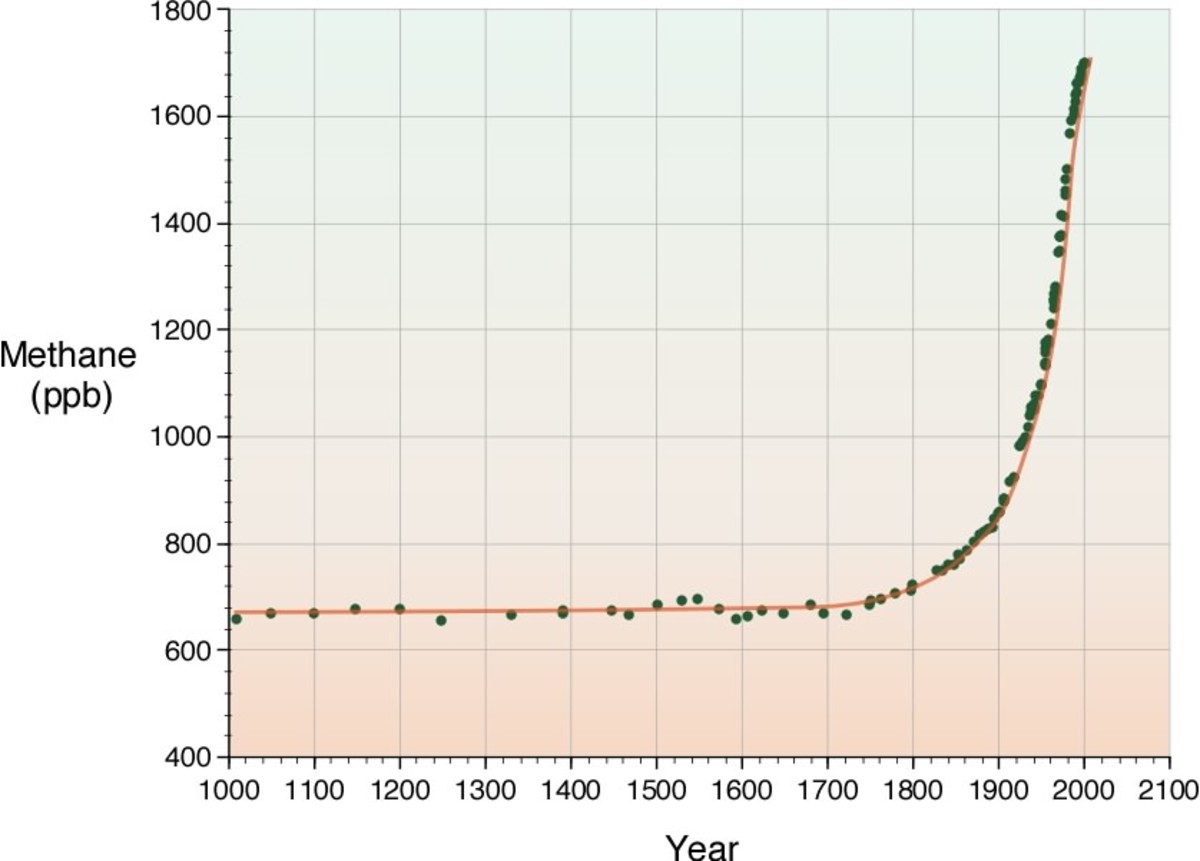2012 Climate News -- Global Warming, Global Cooling, Or Global Gobbledygook?
.
Global warming appears to be shifting to global cooling, even though the concentration of carbon dioxide in Earth's atmosphere remains on the rise, and global warming arguments remain heated.
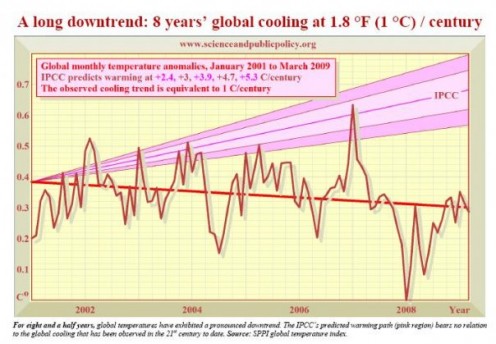
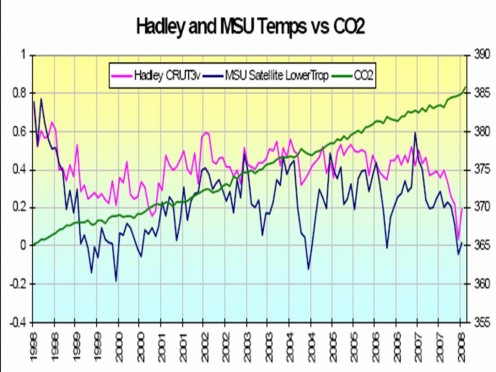
The Ever-Present, Indisputable Sun
The Sun's energy output varies over time. Scientists measure this energy output in at least two ways:
- total solar irradiance (watts/m^2), and
- solar activity (sunspot numbers).
Variations in both quantities occur over short cycles and over long cycles. The short cycles of solar variation are approximately eleven years. The long cycles of solar variation are approximately two hundred years. Eleven-year cyclic variations and two-hundred-year cyclic variations are synchronized and interrelated.
Studying such solar variations reveals that all periods of significant climate change during the last 7,500 years occurred because of roughly periodic changes in total solar irradiance every two hundred years. These solar changes, every two hundred years, are small, however, and alone they cannot explain the corresponding temperature changes (every two hundred years), between Earth's periodic global warmings and Little Ice Ages. Consequently, a person can reasonably propose that something amplifies the relatively small periodic changes in solar activity to cause the relatively large periodic changes in terrestrial temperatures.
The question, thus, arises, "What specific mechanism amplifies a relatively small solar energy input into a relatively large temperature change?"
Answering this question requires an understanding of feedback. Feedback is a process by which a small change multiplies itself into a large change. Think of it as a loop of cause and effect. The loop starts with an input that somehow circles around to add a copy of itself to the original. One becomes two; two becomes four, and so on. The thing that causes the loop is the amplifier. In the Sun's case, the amplifier is Bond albedo - the total measure of Earth's atmospheric reflection, according to Habibullo I. Abdussamatov (2012) [Bicentennial Decrease Of The Total Solar Irradiance Leads To Unbalanced Thermal Budget Of The Earth And The Little Ice Age, APPLIED PHYSICS RESEARCH, 4(1):178-184]
As Abdussamatov describes it (p.179):
"Bond albedo is determined by three global optical parameters of the whole globe with its air and water envelopes averaged along a whole vertical line surface-atmosphere: by the values of both the atmospheric albedo and albedo of the Earth surface, as well as by the value of atmospheric transmission in the solar spectrum."
In other words, a path from the top of Earth's atmosphere, through its subsequent air layers, clouds, ground and ocean depths determines how solar energy is transmitted and reflected. Changes in Bond albedo (measured along this imagined path) change how Earth transforms solar energy.
"Thus, the long-term change of the Bond albedo is a powerful force for variations of the Earth climate," according to Abdussamatov (p.180).
If I understand correctly, then, even though the solar changes alone are not large enough to alter Earth's temperature significantly, these same solar changes DO alter Earth's Bond albedo enough to cause further changes in Earth's temperature. These initial solar changes, thus, initiate a cycle of additional, embedded changes (a feedback loop) that multiplies the original change in solar activity to an extent that eventually changes Earth's temperature significantly.
The key to understanding this is as follows:
- The time required by Earth to emit long wave radiation into space lags behind the time required by Earth to absorb shorter-wave, solar radiation.
- The immense heat storing capacity of the oceans creates a sort of inertia to immediate temperature change.
- Compared to increases or decreases in total solar irradiance, increases or decreases in Earth’s temperatures are slow, requiring between 8 to 20 years to show up.
By Abdussamatov's calculations, many years are required for successive small increments in total solar irradiance to multiply their collective effect to change global temperature. In a similar way, many decades are required for total solar irradiance following a decreasing trend to multiply into a long-term deficit that changes the whole planet for geologic epochs.
To paraphrase Abdussamatov (p. 181):
During long-term declines of total solar irradiance, the average annual enthalpy change in the Earth-atmosphere system turns out to be negative. During long-term increases of total solar irradiance, the average annual enthalpy change is positive. Furthermore, the change in Bond albedo combines with the change in total solar irradiance to play the most important role in changing both the energy balance of the Earth-atmosphere system and its temperature. Observing the annual averages of these effects during a long period will reliably determine the course and value of both an energy excess and an energy deficit of the Earth-atmosphere system. Taking into account the forecast for total solar irradiance, a person can define, to a high degree of certainty, and predict, well in advance, the direction of forthcoming changes in global climate.
Recent Trends
From the early 1990's, values of both eleven-year and 200-year total solar irradiance have been decreasing at accelerating rates, thus, the absorption of total solar irradiance by Earth has been decreasing at an accelerating rate too. In terms of total solar irradiance, Solar Cycle 24 is less than Cycle 23, which was less than Cycle 22. These short-term reductions continue the long-term reduction in total solar irradiance over the last two hundred years. The long-term reduction, however, did not yet affect Earth's emission of energy into space, since heat previously accumulated in world oceans was still flowing out at the same rate, due to thermal inertia that takes successive, 8 to 20 year spans to overcome.
Paraphrasing Abdussamatov again (p. 181):
Since the Sun now clearly continues in its two-hundred-year long phase of low luminosity (i.e., low total solar irradiance), the energy imbalance will continue further for the next few 11-year cycles. As a result, Earth will have a negative energy balance. The gradual heat build-up from solar energy by the world oceans during the whole twentieth century and now the gradual release of this heat (from solar energy build-up) during the coming 8 to 10 years will result in a notable decrease of global temperature. This will lead to a rise in Earth's albedo and a drop in Earth's atmospheric water vapor. More reflectivity and less water vapor will create a combined influence to further reduce both absorbed solar radiation and water-vapor warming. The influence of this growing, consecutive chain of such changes will cause additional decreases of global temperature, exceeding the effect of a two-hundred-year decrease in total solar irradiance alone.
In other words, small increases in Sun heat accumulate slowly into large increases in Earth heat.
Small decreases in Sun heat accumulate slowly into large decreases in Earth heat.
As Earth heat gradually decreases, successive cycles of reduced Sun heat begin to add up, causing an overall, long-term decrease in Earth heat that increases Earth's albedo and decreases Earth's water vapor, which magnifies forthcoming continuing decreases in Sun heat even more.
Again, reductions in solar irradiance alone are not enough to cause significant temperature changes, but albedo changes caused by reductions in solar irradiance amplify the initial irradiance reductions by causing more of the subsequent solar radiation to reflect from an atmosphere that now also has less water vapor.
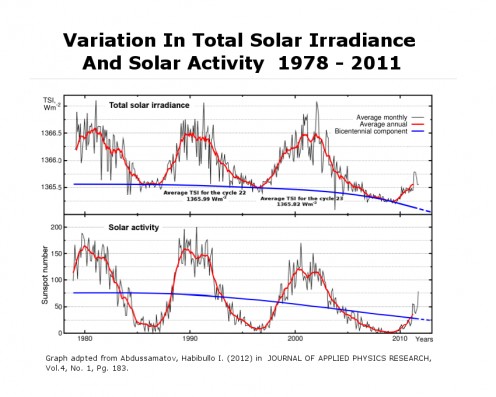
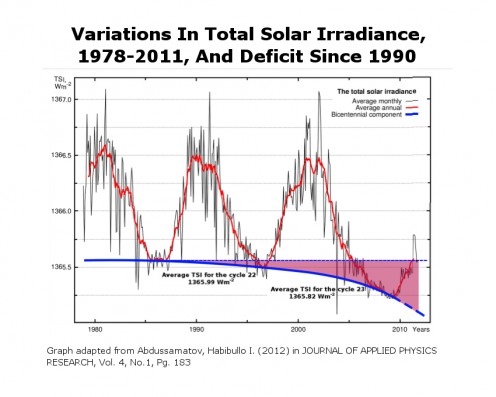
What This Means For The Future
If all this is correct, by Abdussamatov's estimate, then we can expect the19th deep minimum of global temperature in the past 7500 years (i.e., the 19th Little Ice Age) sometime between the years 2044 and 2066.
Proponents of human-caused global warming, interestingly, have insisted that CO2 is the cause whose effect the atmosphere amplifies. Such proponents clearly understand the concept of amplification, but they refuse to consider the prospect that their choice of amplifying cause is wrong. Rather than an atmospheric trace-gas, a much more reasonable candidate seems to be a trace amount of heat from Earth's dominant heating source -- the Sun.
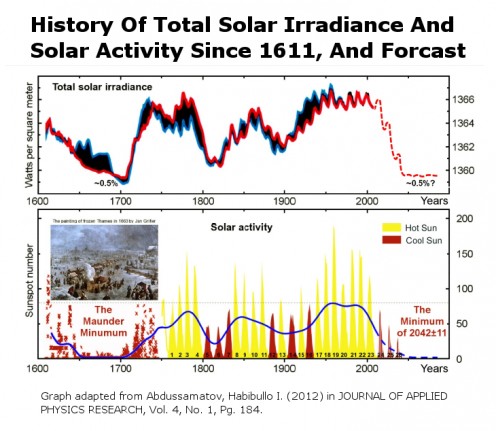
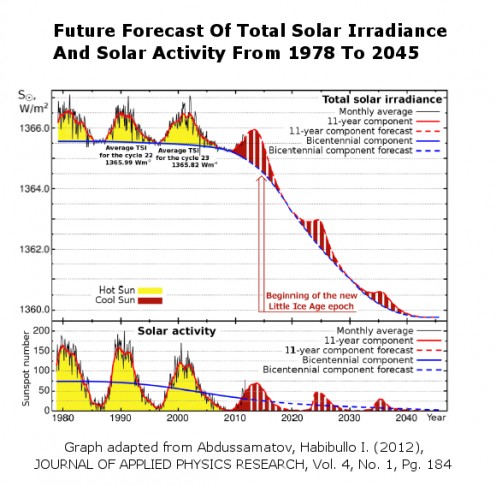
Why Is Global Warming Panic Still Propagating?
Both graphs below visualize the same data. The difference between the graphs is the size of the vertical temperature scale. The "Global Warming Alarmism" graph represents each two tenths (0.2) degrees with a much larger gap of space than the "Global Warming Realism" graph represents even one (1.0) degree. In this way, 0.2 degrees takes on the visual appearance of an alarming quantity.
Global Warming Alarmism Vs. Realism


Good Intentions Gone Bad
Concern about human-caused global warming most likely stems from a legitimate good intention to respect the planet, but passion seems to have overtaken reason, with a consequence of vilifying the wrong factor -- CO2, or more specifically, CO2 that human beings produce through dirty, fossil-fuel technology.
Using references to this dirty technology, environmental advocates have used appealing arguments to lure a huge following of people dedicated to protecting the Earth. Unfortunately, this seemingly positive campaign has come at the expense of surpressing fundamental truths about CO2 -- an invisible, odorless, TRACE gas that has existed in favorable conjunction with life for eons.
I suspect that CO2 has gotten such a bad reputation because of its association with car exhaust or smoke stacks, and because of its association with CO (carbon monoxide), which, most certainly, IS a poison to life, as we know it.
Even though intelligent people know the difference (intellectually) between CO2 and CO, these people maintain persistent memories (visually) of choking smoke from clunker cars and carbon-fuel smoke stacks. Consequently, as this false visual association combines with messages that portray humankind as a destroyer of Nature, a belief that condemns CO2 easily gains hold. Opinion replaces observation, and faith replaces proof, while iconic misunderstandings readily flourish amid a network of promoters who prosper from these misunderstandings.
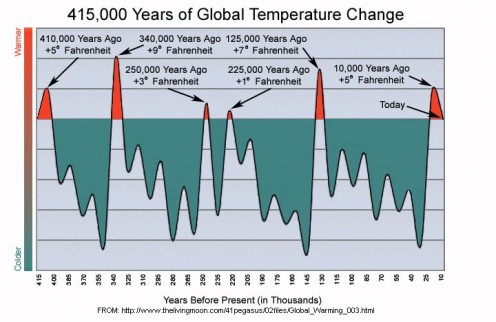
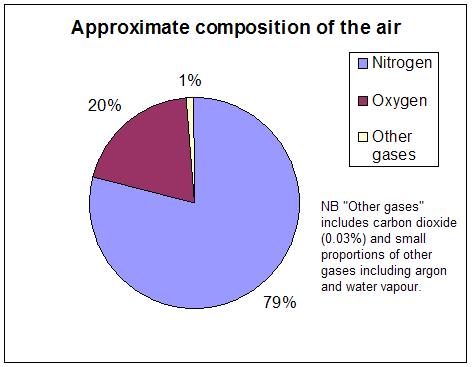
The True Picture Of CO2 On Earth
Consider the composition of 10,000 molecules of Earth’s dry air.
10,000 molecules of DRY air contains roughly 7,808 molecules of nitrogen, … 2,094 molecules of oxygen, … 93 molecules of argon, … 4 molecules of carbon dioxide, and so few of the other trace gas molecules that whole molecules cannot be present, which leads this manner of discussion to break down because of these trace gases' extremely small quantities (compared to the primary components of air) .
Earth’s air also has an important variable component, water vapor, which can range between 1% and 5% of low-layer atmospheric air.
Now consider the question, “What happens to the other molecules of air (at a given pressure), when water vapor takes up a place in the mixture of atmospheric gases?”
The answer is that water vapor molecules displace some of the other air molecules.
In other words, the composition of a given mass of air changes for a time, when water vapor enters the mix. At 1% water vapor, air contains 25 times more H20 than CO2 (i.e.,100 molecules of water vapor for every 4 molecules of carbon dioxide). At 4% water vapor, air contains 100 times more H2O than CO2 (i.e.,400 molecules of water vapor for every 4 molecules of carbon dioxide).
Which specific molecules of air does water vapor displace?
The sources I consulted claim that water vapor molecules displace nitrogen and oxygen, mentioning nothing about water vapor’s displacement of CO2. The reason for this is probably the extremely small quantity of CO2 in atmospheric air. I get the impression that only the two major components of air are worthy of consideration, when displacement by water vapor is the focus. In fact, I have not yet found a source that mentions CO2 in the context of water vapor displacement. We will proceed, therefore, on the assumption of the maximum concentration of CO2 in the air (0.040%), where water vapor (H2O) displaces only nitrogen (N2) and oxygen (O2).
This raises questions, however:
- Is CO2 immune to displacement by water vapor?
- Why are nitrogen and oxygen the prime candidates for displacement by water vapor?
Again, I suspect that the extremely small percentages of trace gases (including CO2) are not significant considerations in the displacement process. Atmospheric air is predominantly nitrogen and oxygen, so nitrogen and oxygen molecules are the molecules that water vapor predominantly displaces, when it enters the atmospheric air mix. If this is incorrect, then I trust that someone will correct me.
Since water vapor molecules are lighter than the nitrogen and oxygen molecules that they displace, the air becomes lighter. This explains why moist (lighter) air rises above dry (heavier) air, eventually forming clouds that reflect sunlight and precipitate rain. Water vapor (H2O), thus, is the chief component of air that determines atmospheric heating and cooling, NOT carbon dioxide (CO2).
The CO2 Greenhouse Effect
The carbon dioxide greenhouse effect supposedly plays a significant role in heating Earth's atmosphere. The greenhouse "theory" claims that radiant energy from the sun penetrates Earth's atmosphere to warm the Earth's surface. Earth's surface, then, heats up and radiates heat outward at a longer wavelength than the incoming radiant energy. Greenhouse gases absorb the longer-waved Earth heat and radiate some of this heat back toward Earth’s surface, to heat Earth even more. Since CO2 is the second most abundant greenhouse gas (next to water vapor), as the theory goes, CO2 plays a major role in the heat-absorption-back-radiation, heating process, forcing the global temperature higher than it would otherwise be without CO2.
The trouble with the greenhouse, back-radiation idea is that no one has ever proven that things work like this. In fact, someone has demonstrated convincingly that things do NOT work like this [Wood, R. W. (1909). Note On The Theory Of The Greenhouse, THE LONDON, EDINBURG AND DUBLIN PHOLOSOPHICAL MAGAZINE AND JOURNAL OF SCIENCE, SERIES 6,Vol.17, pp. 319-320].
Robert W. Wood demonstrated that back radiation is insignificant, and that the reason greenhouses heat up is the lack of convective air exchange.
Nasif S. Nahle (2011) has recently confirmed Wood’s findings [Repeatability Of Professor Robert W. Wood’s 1909 Experiment On The Theory Of The Greenhouse, BIOLOGY CABINET ONLINE-ACADEMIC RESOURCES AND PRINCIPIA SCIENTIFIC INTERNATIONAL]
In addition to Wood's and Nahle’s findings, no one has ever observed or measured the ability of CO2 (in TRACE amounts) to cause temperature increases as great as those that the CO2 greenhouse "theory" proposes. The CO2 greenhouse effect, thus, is a surmised, exagerated effect based on erroneous interpretations of thermodynamics. The CO2 atmospheric greenhouse heating mechanism is simply NOT an empirically proven, real-world mechanism. Consequently, today’s climate models incorporate an erroneously surmised mechanism, where the exaggerated importance of CO2 biases forecasts in favor of unproven inputs. This is why we see graphs at odds with reality, such as the first graph presented at the beginning of this article.
The CO2 greenhouse theory suggests a farfetched process where four carbon dioxide molecules per every ten thousand air molecules forces 100 to 400 water vapor molecules to heat Earth more and more rapidly than the water vapor molecules would otherwise heat Earth alone. This theory further suggests that a minute amount of back radiation significantly INCREASES the heat of an already hotter body, rather than join it passively, like a drop of water falling into a rushing stream (with NO measureable addition to the flow).
A less farfetched suggestion is that the heating impact of the 100 to 400 water vapor molecules (and other air molecules) is already dominant, and any further, minute heating from CO2 piggybacks on top of the water vapor, with no visible signal.
The REAL Greenhouse Effect
Earth’s air heats and cools primarily through convection, NOT by back radiation. Back radiation in Earth's atmosphere appears to be so miniscule that measuring instruments cannot register it within the errors of the measuring instruments.
The real “greenhouse effect”, then, is the supression of convection, NOT the trapping of radiation.
Since, on Earth, convection is a major factor in determining the weather, there is NO surpression of convection (in the sense of a greenhouse). Consequently, there is NO greenhouse heating mechanism operating.
Earth's atmospheric heating and coolong rely on other mechanisms.
SUMMARY
In Earth's present atmosphere, the main gaseous components of air are as follows:
· Nitrogen (N2) - 78% or 7,800 molecules per 10,000 air molecules
· Oxygen (O2) - 21% or 2,100 molecules per 10,000 air molecules
· Argon (Ar) - 0.93% or 93 molecules per 10,000 air molecules
· Carbon Dioxide (CO2) - 0.04% or 4 molecules per 10,000 air molecules
· Water Vapor (H2O) - 1% to 4% or 100 to 400 molecules per 10,000
The CO2 atmospheric greenhouse theory, therefore, requires that every four molecules of CO2 in each ten thousand molecules of air drive the heating of every nine thousand, nine hundred and ninety-six other air molecules. In other words, radiative heat transfer of four molecules dominates or controls convective heat transfer of ten THOUSAND molecules. Even more to the point, every four molecules of air force how every other nine-plus thousand molecules of air distribute heat.
This (as is often criticized) is NOT a simple-minded, erroneous analysis, but rather, it is a revelation of the simply outrageous claim that the CO2 greenhouse theory erroneously puts forth.
CO2 is a TRACE gas. At its TRACE concentration in Earth's atmosphere, it does NOT control Earth's climate. Even with twice as much CO2 in the air, CO2 would still be a TRACE gas. The Sun, in conjunction with water and water vapor, controls Earth’s climate.
Carbon dioxide is neither a pollutant nor a poison, any more than water is. Of course, a person can drown in water, and a person can suffocate in carbon dioxide, but the quantity of CO2 in Earth's atmosphere is nowhere near a lethal threshold. There are bizarre instances when giant bubbles or clouds of CO2 have surfaced from deep volcanic lakes or erupted from volcanoes and smothered whole villages, but these instances are rare.
Ordinarily, CO2 (like water) is NOT lethal. Ordinary exposure concentrations for humans, in fact, exceed atmospheric concentrations. For example, according to one source :
“OSHA [Occupational Safety And Health Administration] guidelines allow a CO2 contaminant limit of 5,000 ppm [over ten times the current atmospheric concentration] for more than 8 hours. In comparison, submarines can reach as high as 7,000 ppm …. Offices typically are 800 to 1200 ppm. Tightly packed conference rooms with minimum ventillation can be 2000 ppm.”
These sobering facts do NOT give human beings permission to trash the planet, by any means. Rather, these facts give us proper insight into what the true problem is. The problem is NOT an atmospheric trace gas, carbon dioxide. The problem is NOT the vastly minute addition to this trace gas by human civilization. Instead, the problem is a wasting of human efforts and a diverting of resources to a problem that does NOT exist.
Soapbox Note
Clean up technology, clean up legitimate pollutants in air and water, or clean up a trashed moral code that no longer prizes excellence. But do NOT subsidize a fantasy that feeds anthropocentric arrogance and robs creative efforts from the advancement of civilization.




